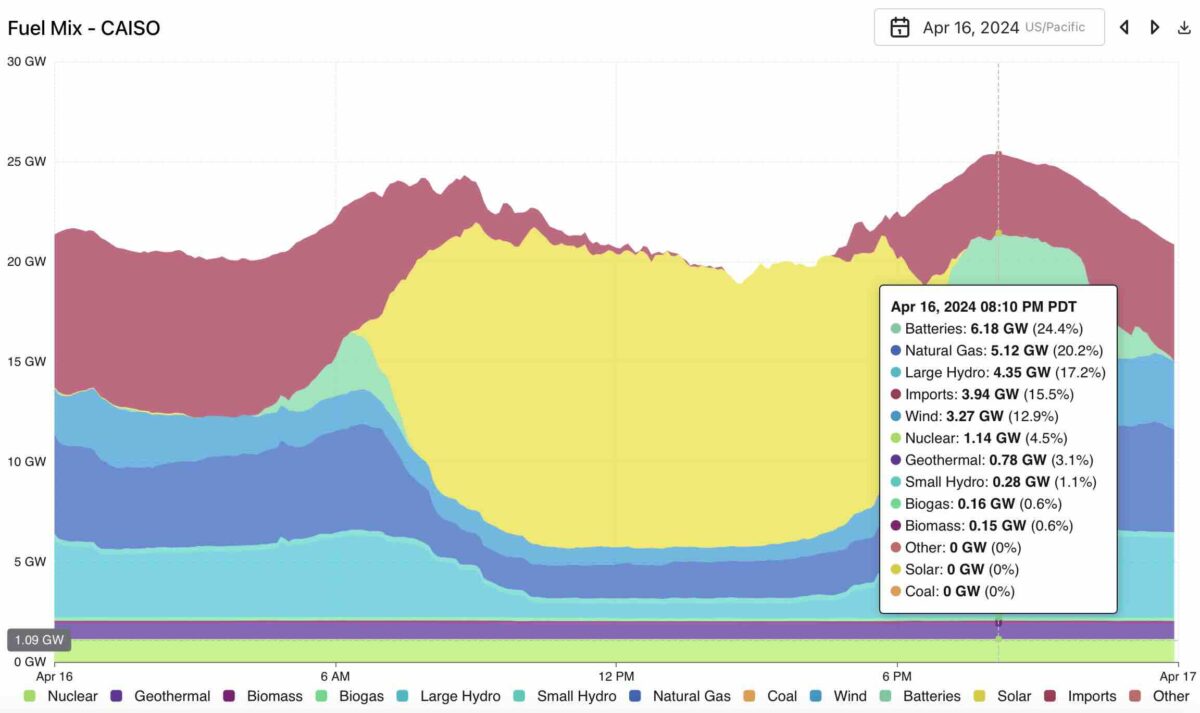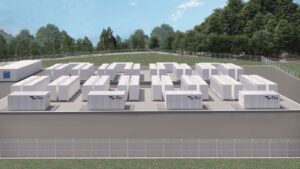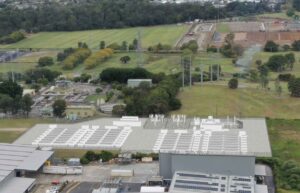A landmark event occurred in the US on Tuesday night when battery storage become for the first time the largest source of supply in the California grid, which delivers electricity to the world’s fifth biggest economy and is one of the world’s biggest grids.
The milestone was noted by a bunch of energy analysts and data geeks on Twitter/X, including by Joe Deely, who noted that the output of battery storage in the evening peak went above 6 gigawatts (GW) for the first time.
That allowed battery storage to overtake gas, hydro, nuclear and renewables as the biggest source of supply for a period of about two hours in the evening peak.

According to the data tracker Grid Status, the peak output of 6,177 MW from battery storage at 8.10pm local time was nearly 1`0 per cent higher than California’s previous peak of 5,625 MW reached at 7.50pm local time on February 15 this year.
Five years ago, the record output for battery storage was a mere 120 MW, according to Grid Status, highlighting the rapid change in technologies in California’s grid.

The California Energy Commission wrote last October that the state had about 6.6 GW of battery storage installed at the time,most of which was utility scale (5.2 GW). That means that a high percentage of its available capacity was discharging when the record was set this week.
About another 1.9 GW of battery storage capacity is in the process of commissioning, and the CEC estimates that the stage needs about 52 GW of battery storage to meet its 2045 goal of getting all of its power from carbon-free sources. (It does not provide storage duration in those statistics).
“Energy storage systems are a great example of how we can harness emerging technology to help create the equitable, reliable and affordable energy grid of the future,” said CEC Vice Chair Siva Gunda in October last year.
Australia is experiencing a similar transition, although it has some way to go to catch up with the sheer scale of California. Australia, which commissioned what was then the world’s first big battery at Hornsdale in late 2017, now has just over 2 GW (and an average of nearly two hours storage) of battery capacity.
Battery storage plays its biggest role in South Australia, which has a world-leading 75 per cent share of wind and solar in its grid. Battery storage is now a feature of morning and evening peaks, and often accounts for well over 10 per cent of supply, and has peaked in that state at 367 MW. And more big batteries are on their way.
California’s grid has been setting numerous records in other ways in recent weeks, with renewables supplying 100 per cent of its electricity demand for between 15 minutes and six hours in 30 of the last 38 days. Just six days ago it reached a new record for utility scale solar output not 17.786 GW.










